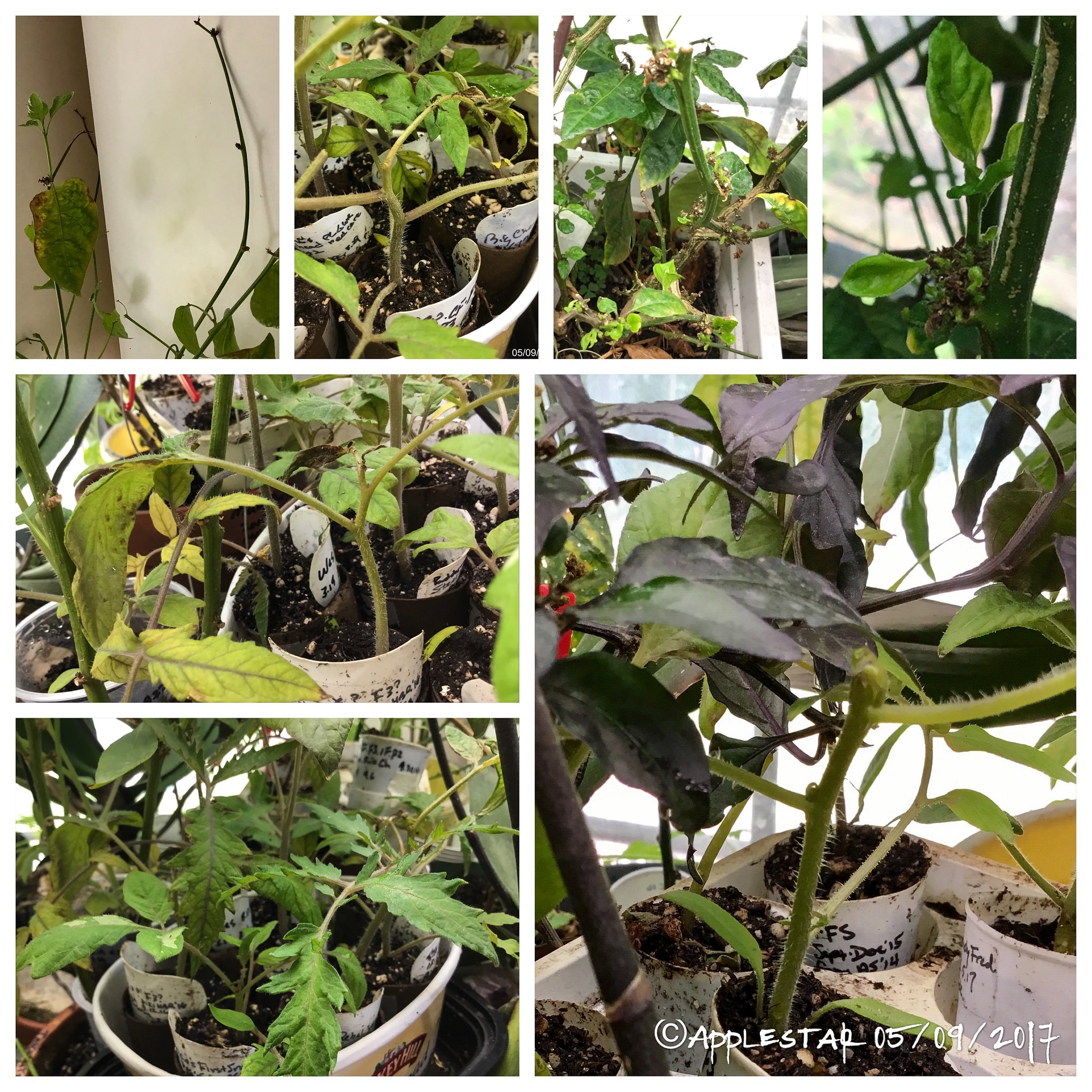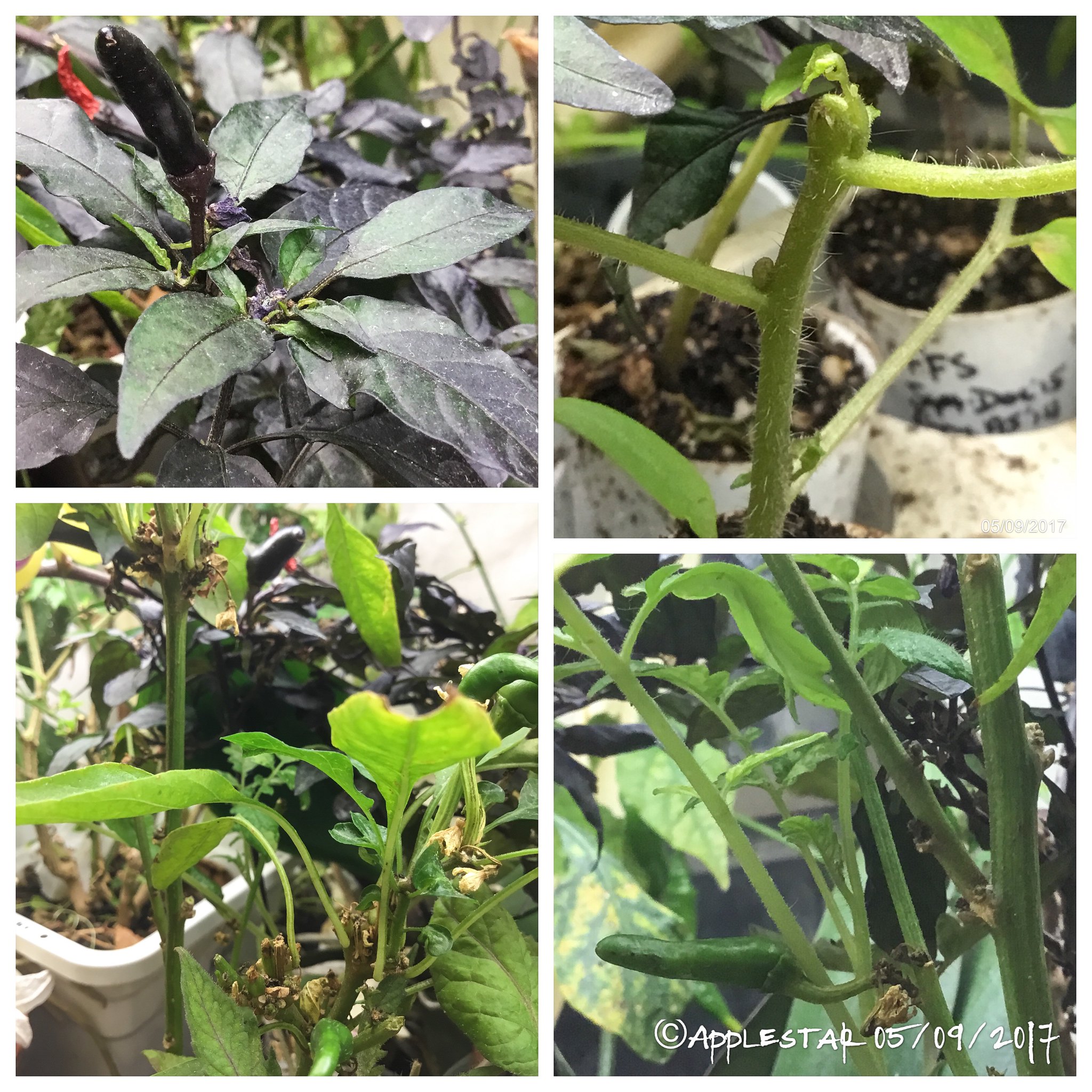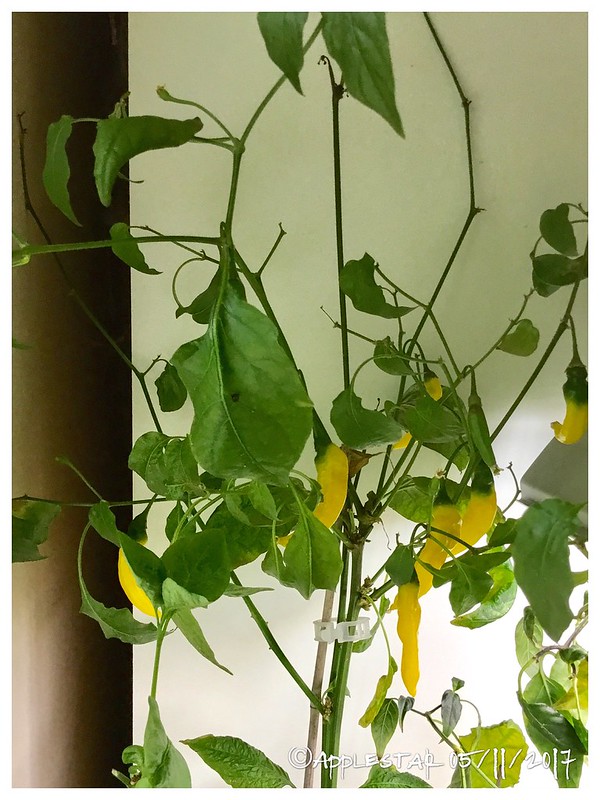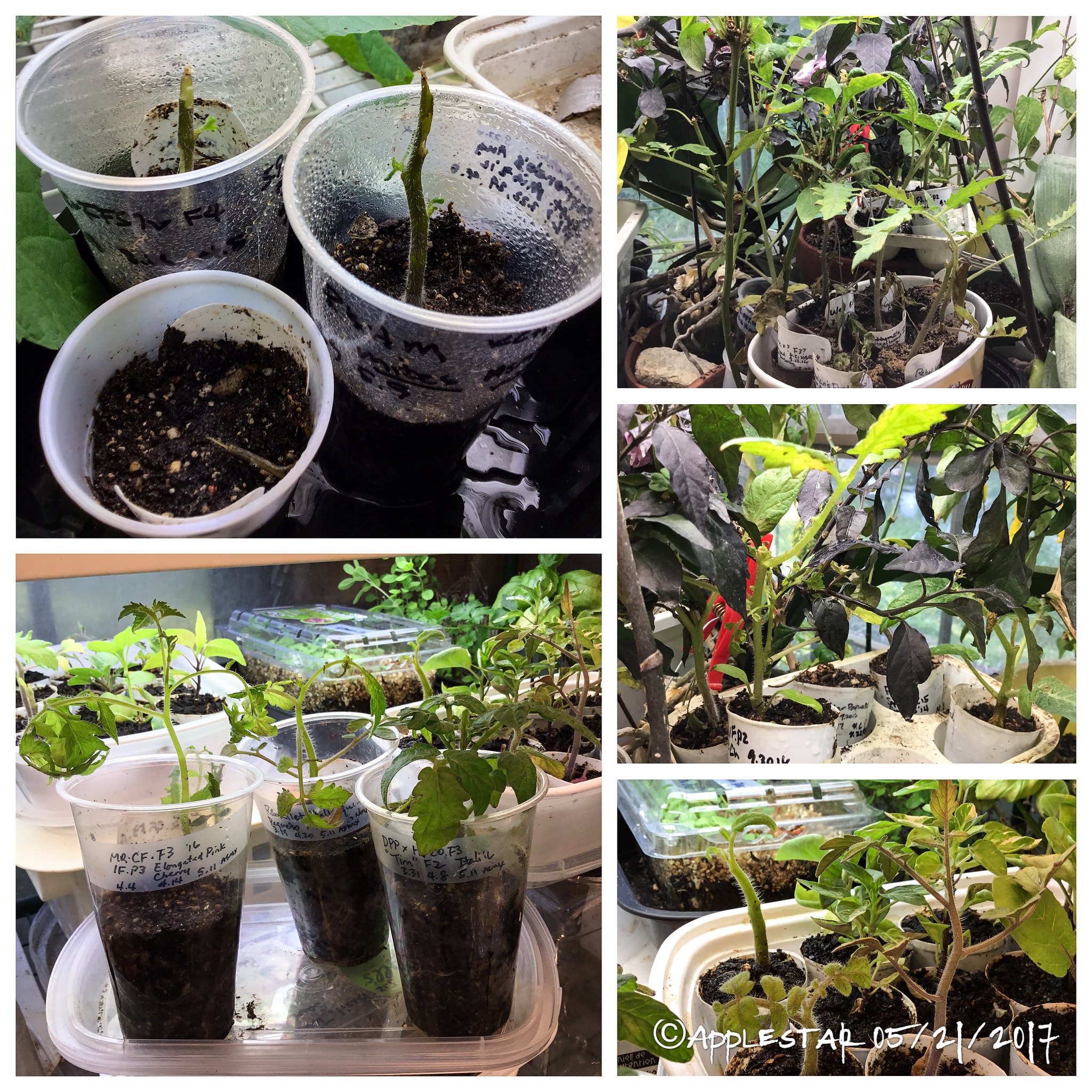...(hopefully)...
I've mentioned elsewhere that I released predatory mites earlier in the winter on my overwintering peppers and other plants in an attempt to forestall repeat of last year when they were devastated by mite infestation (some TRM {tomato russet mites} as well as possibly broad mites and/or cyclamen mites). Moreover, last year, my tomato seedlings that I started later in the winter were severely infested and I had some heartbreaking losses.
The predatory mites were mostly successful. Almost all of the peppers that were initially showing signs of mite infestations have recovered to some degree. Some look really fantastic. At this point, I feel confident that once they can be put outside where the Garden Patrol regulars can have access to them, the mature peppers will be able to continue to recover and grow for the season.
Now my concern is for the new tomato seedlings. A small number have started showing signs of mite infestation and I lost about 1/2 dozen so far. I have been nestling the most recent patients among recovered pepper foliage in hopes of having some of the predatory mites that may still be present to transfer over to the seedlings.
I thought I would share photos of what the mite does to the plants first. So in the first collage, note how the mites destroyed all the growing points in the leafnodes. Peppers are so resilient that they will try to grow out dozens of buds from each node -- that's what all those blasted bumps are. When they are incapable of getting ahead of the mite infestation and every possible growing point has been blasted, the entire branch will become useless even though the tattered mature leaves might remain. Then the peppers will try grow a new node from somewhere lower down. With tomatoes, the top growing point is destroyed first, then the tomato will attempt to grow a single new bud from each leaf node. If all the above ground leafnodes fail, they will try to grow from the buried leaf nodes or possibly they are capable of generating a new bud on the stem just above the roots IF the root system is strong enough.
According to my experience last year, very young seedlings were not able to recover while older seedling were sometimes able to grow an entirely new plant even after they had been left with nothing but a single leafless stick.

The plants in the next collage are showing signs of recovery:


 Lindsay is back!
Lindsay is back! 


